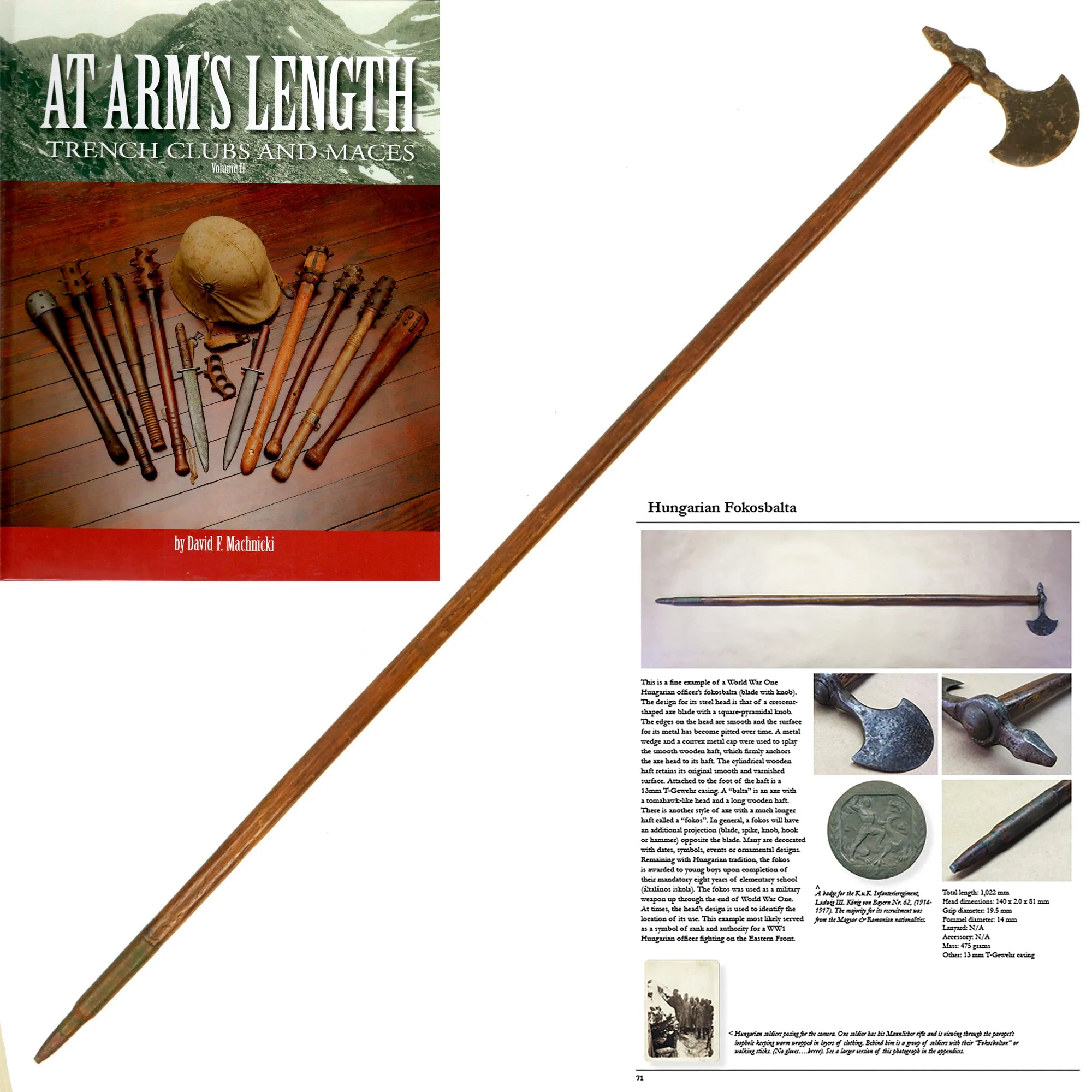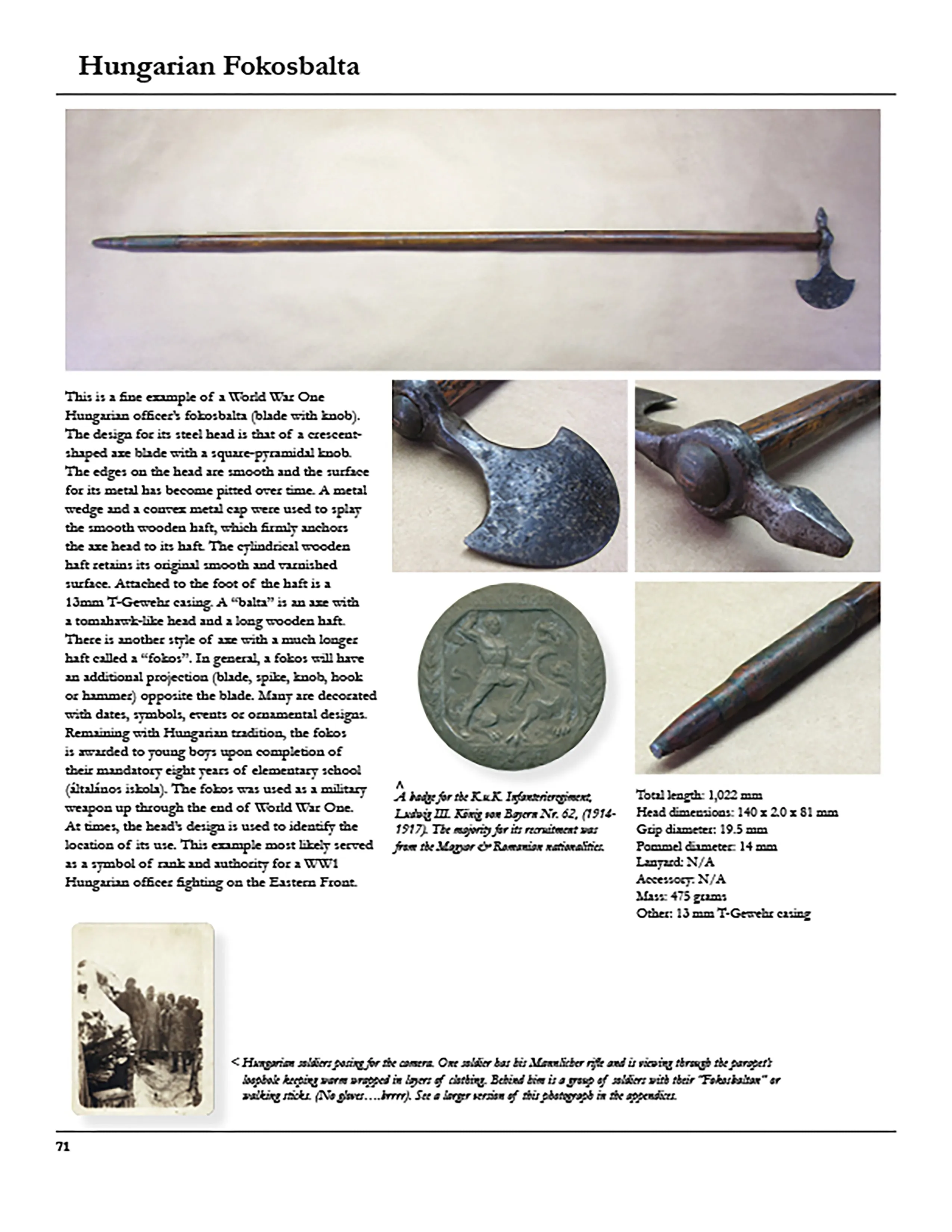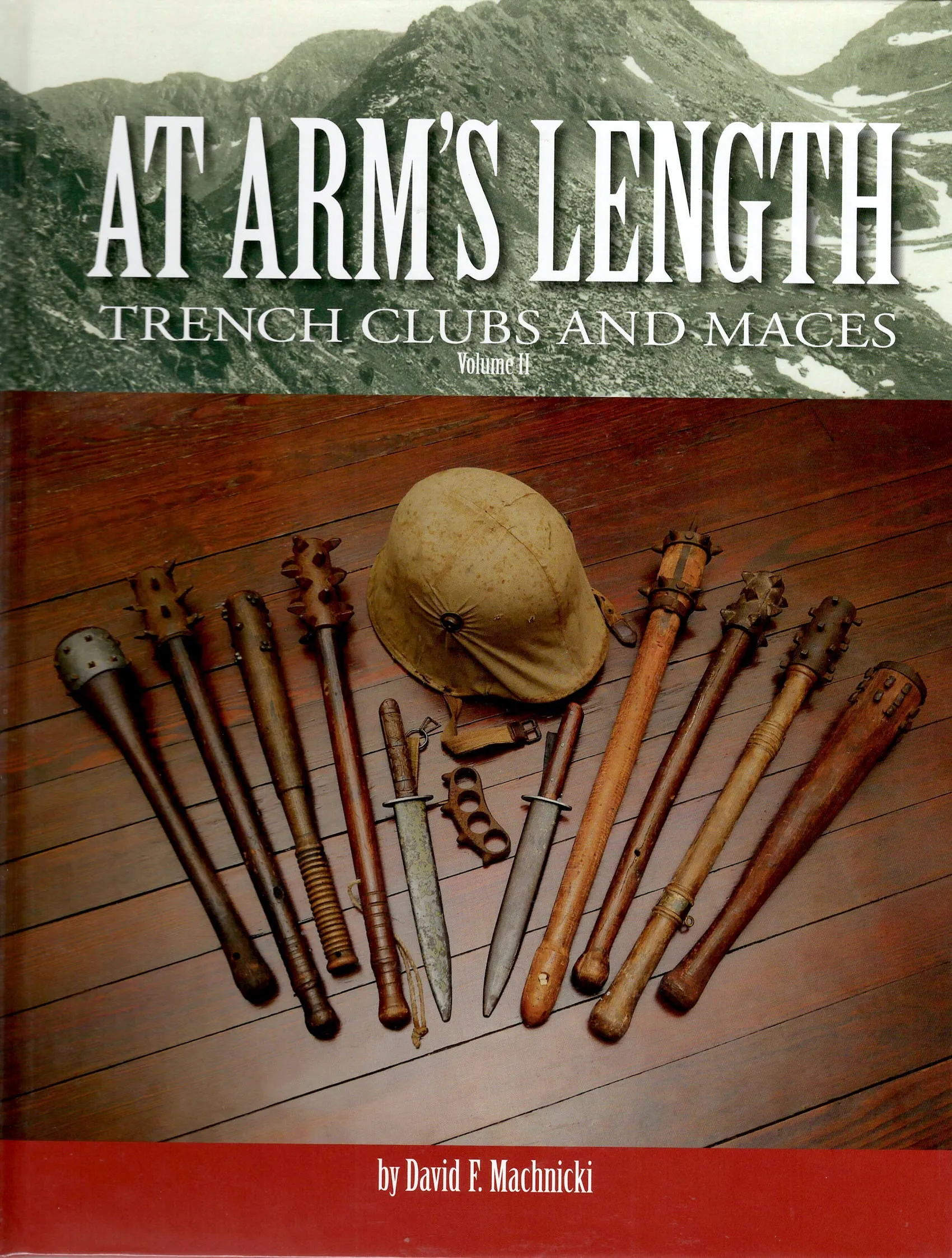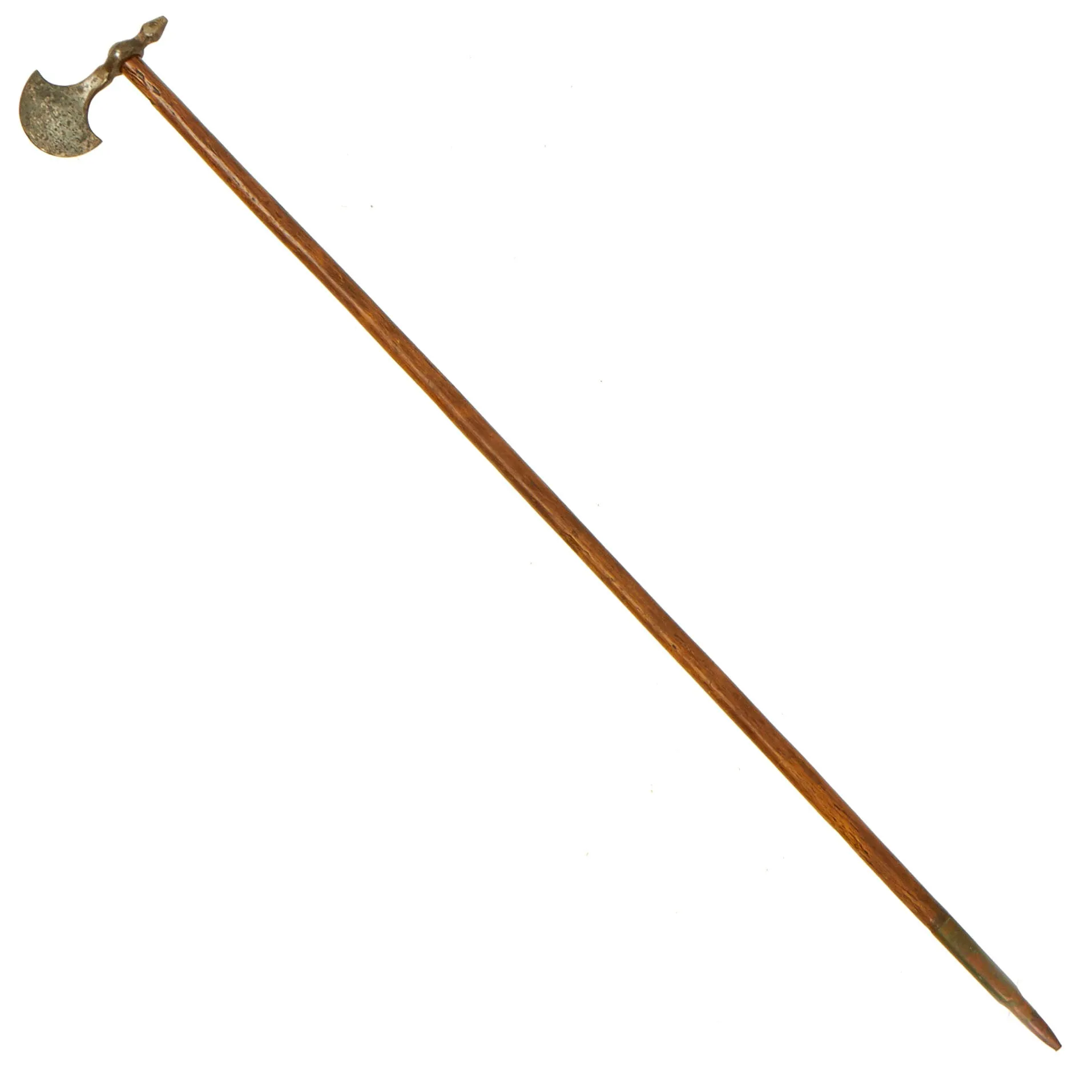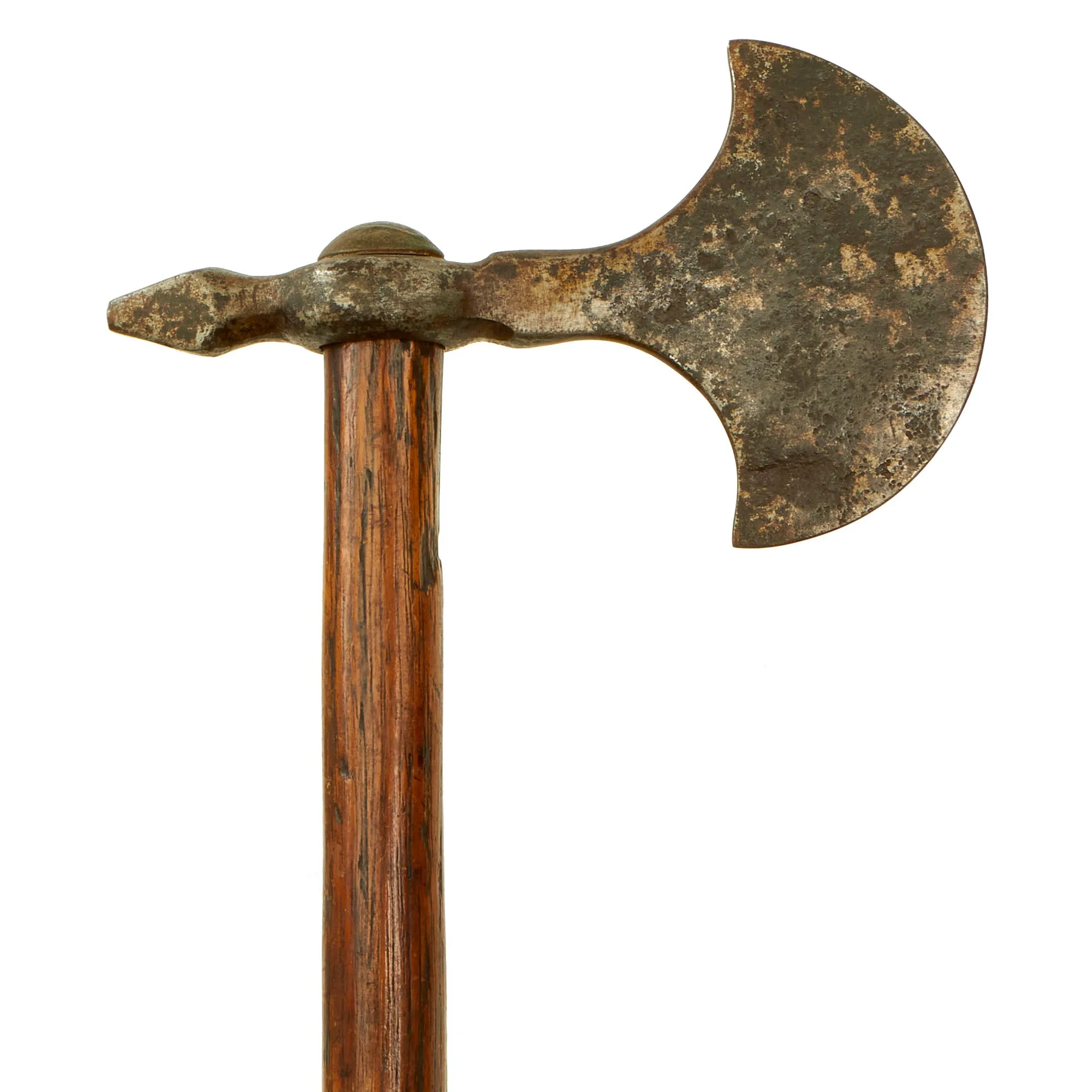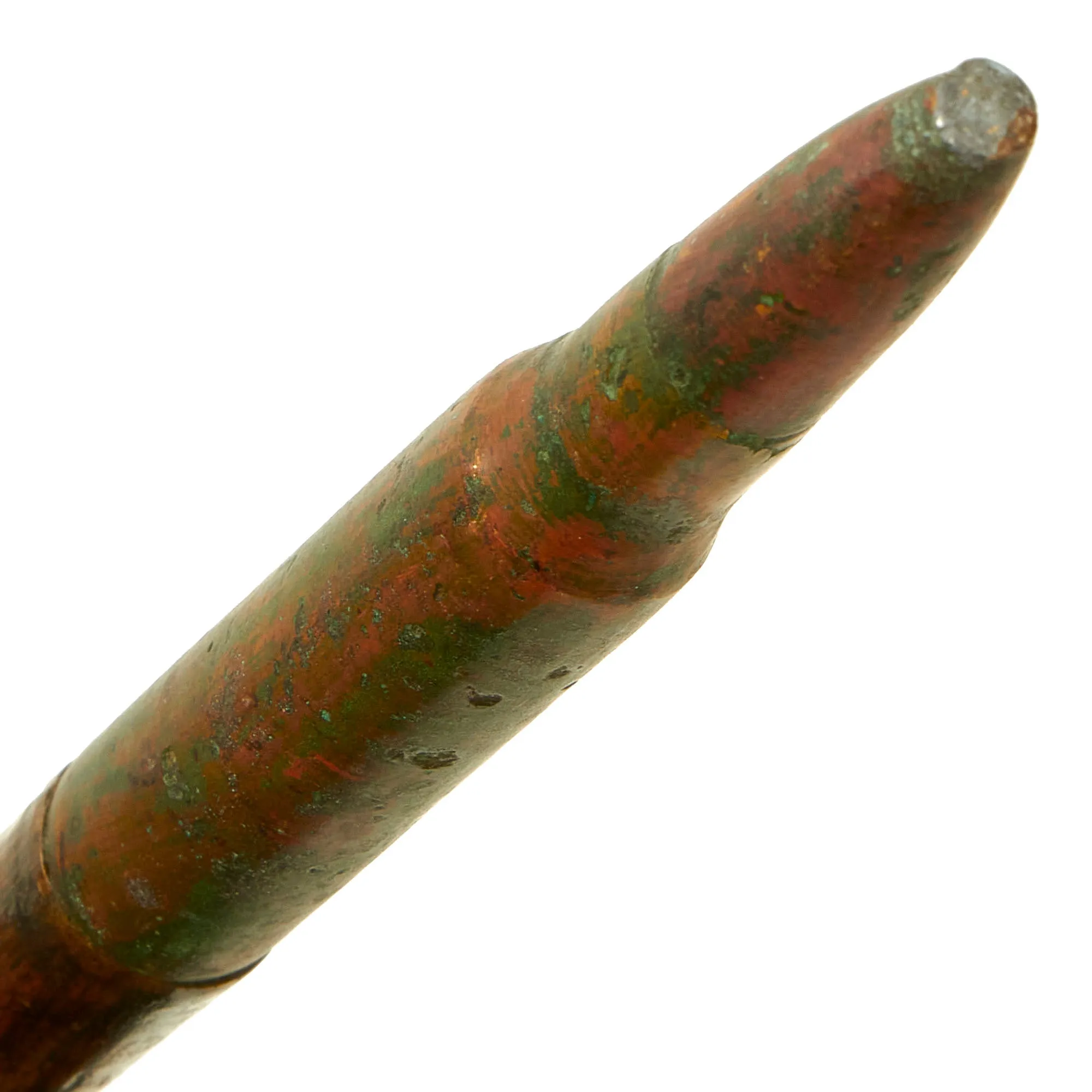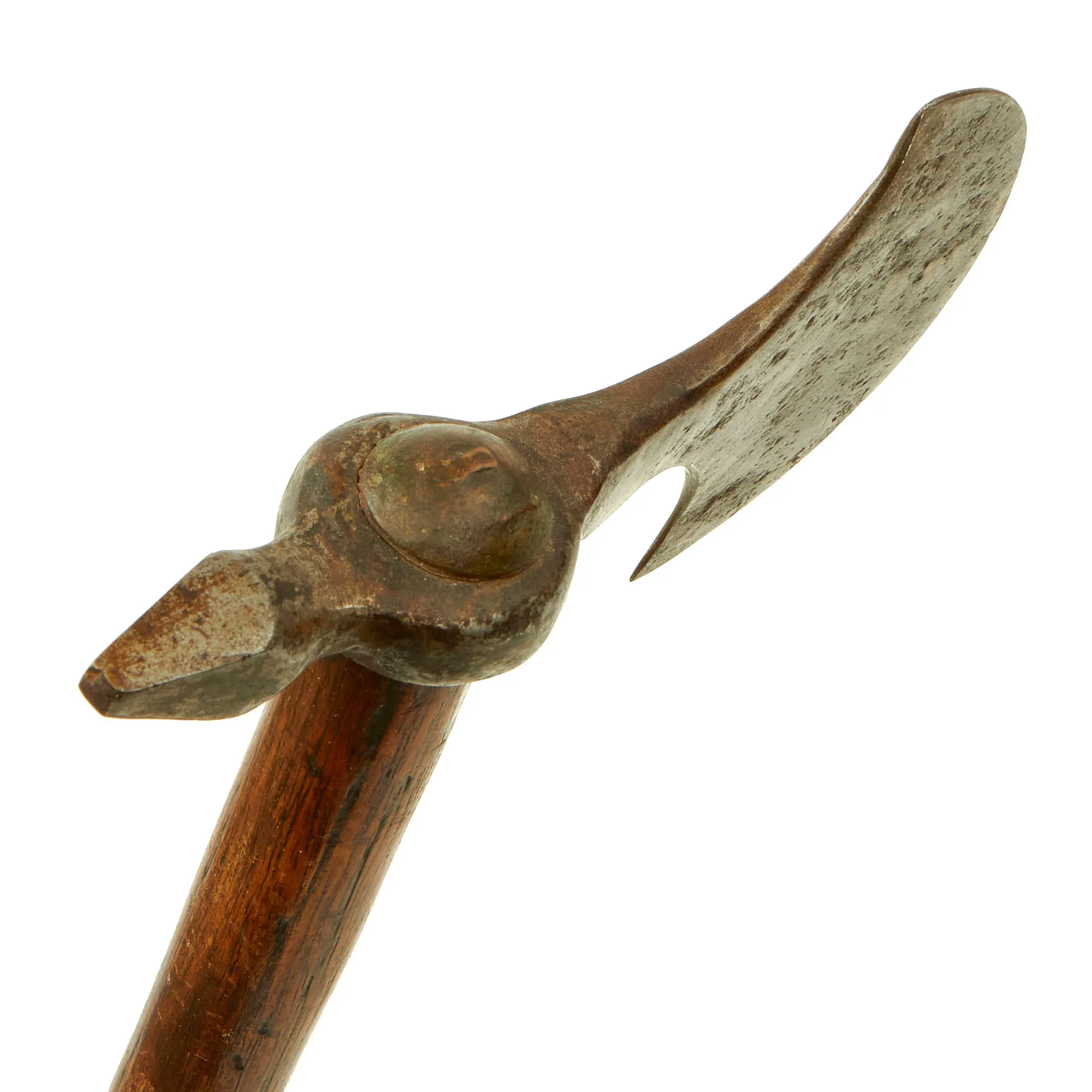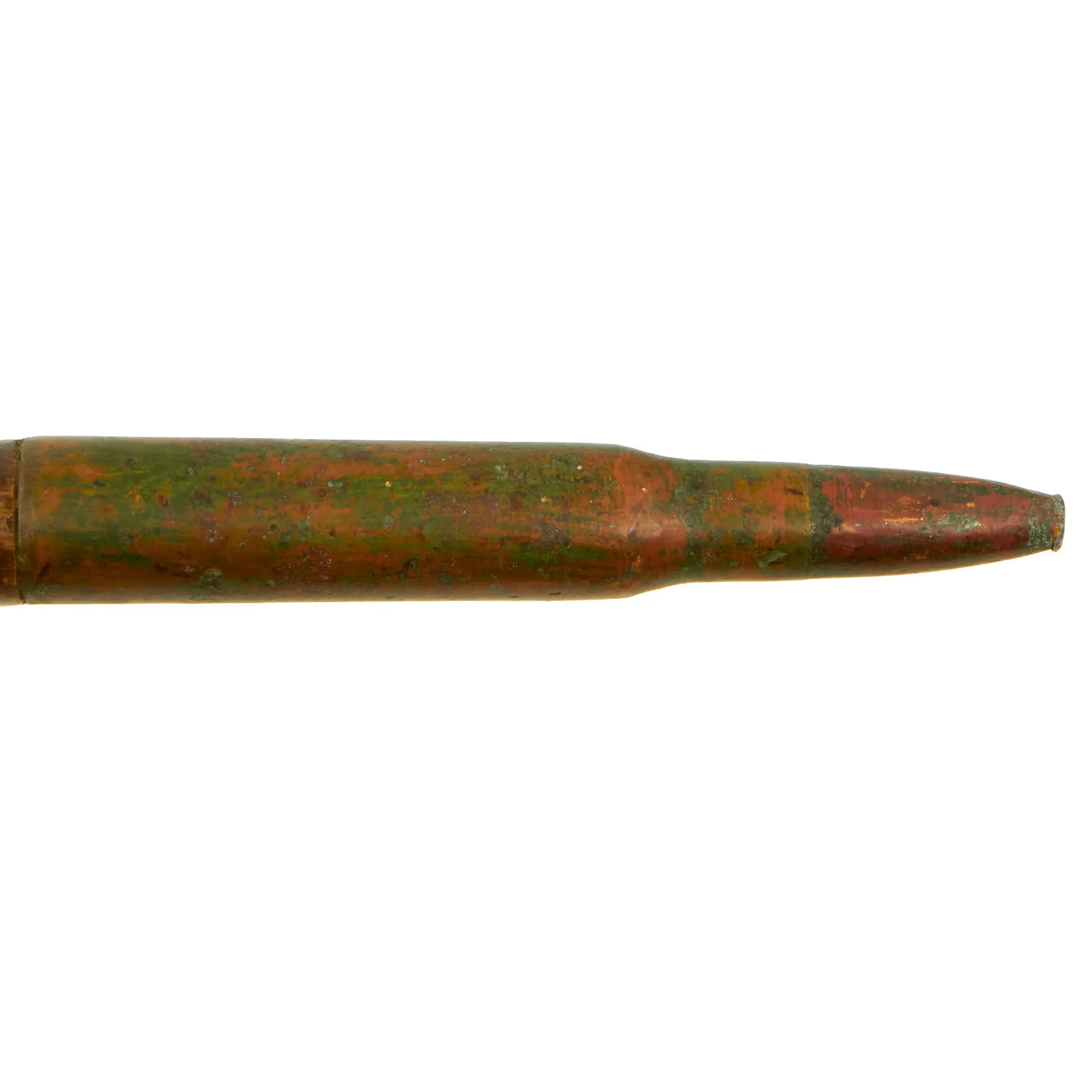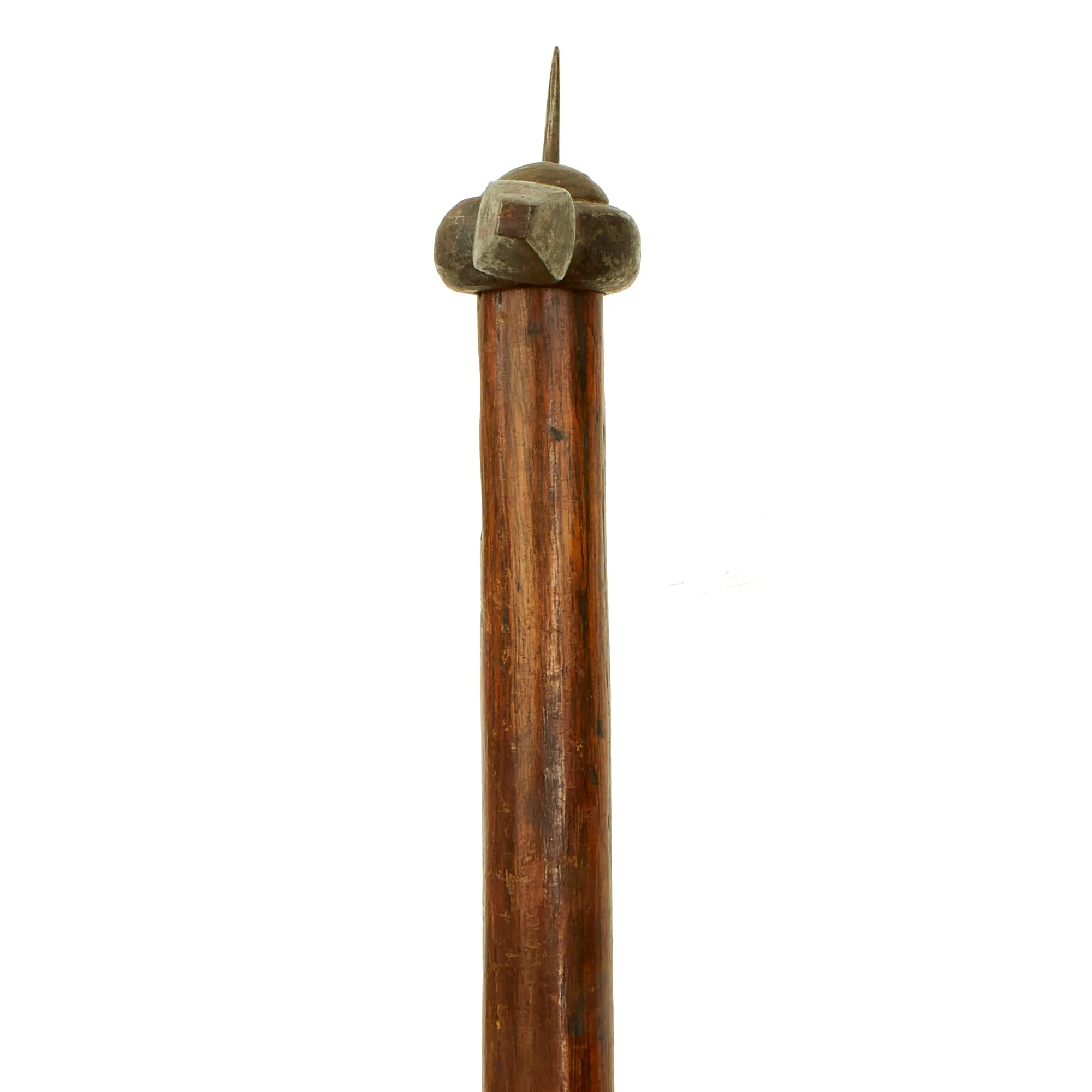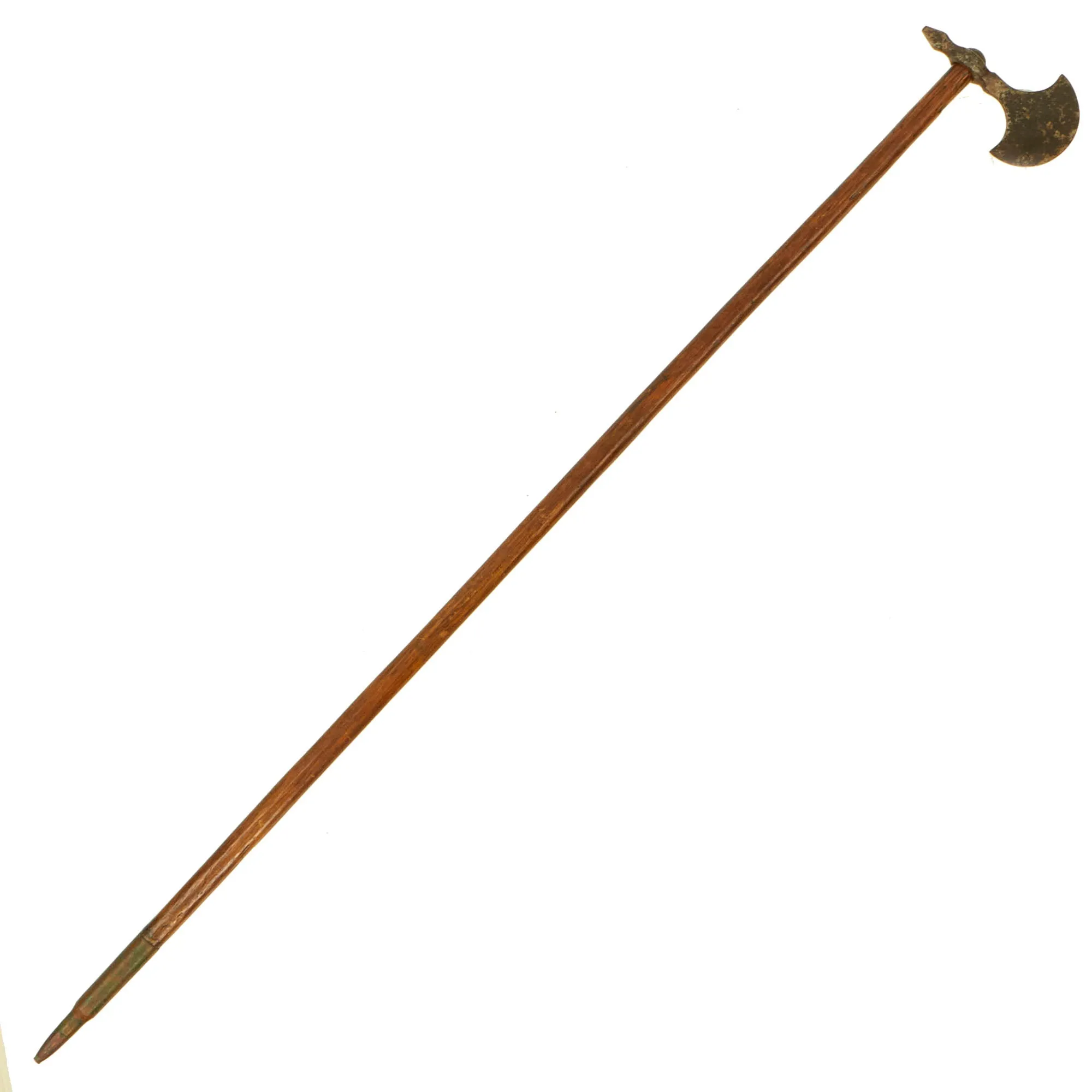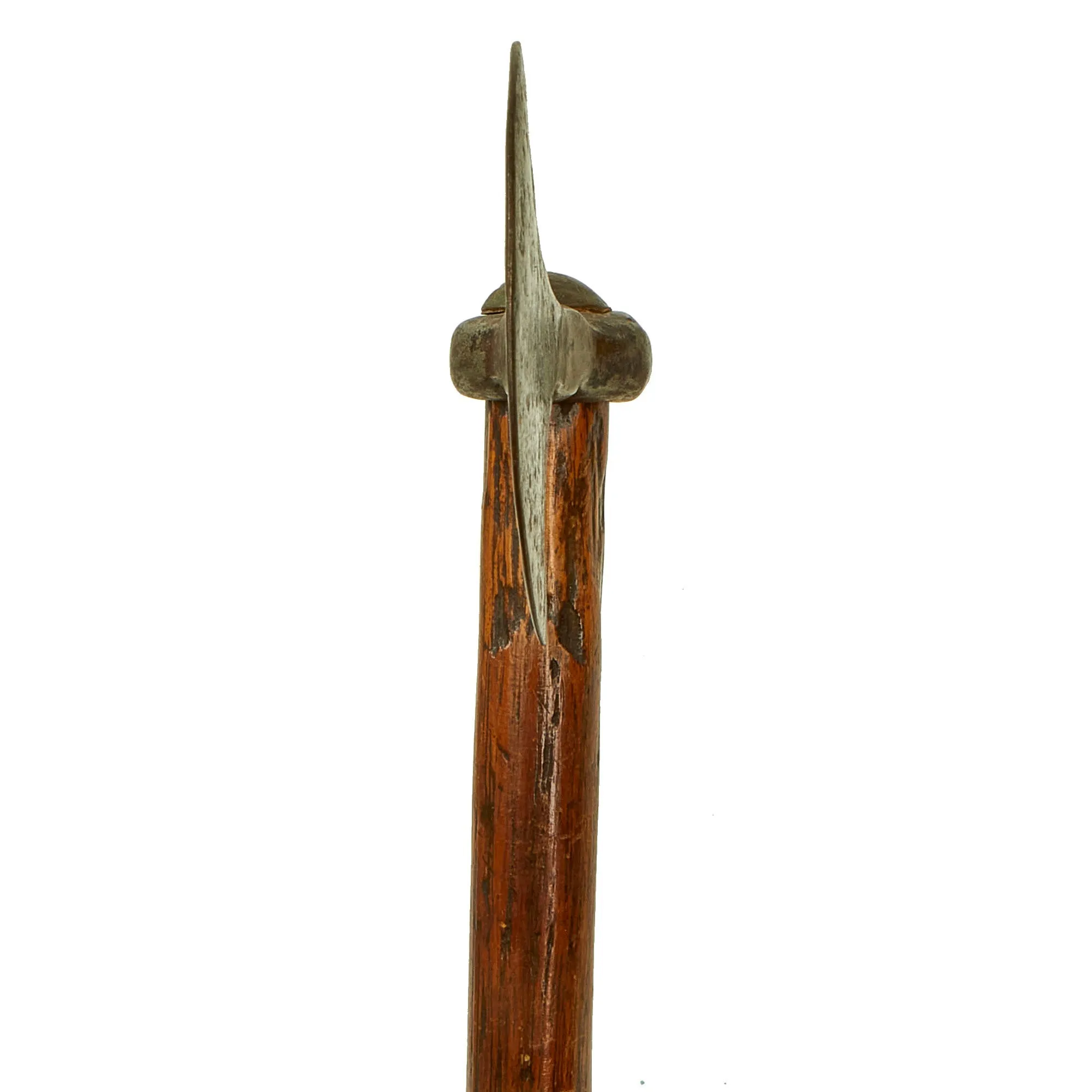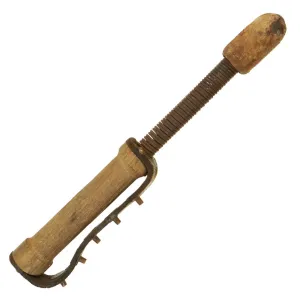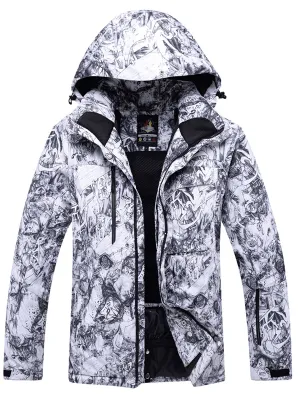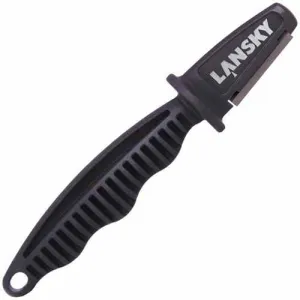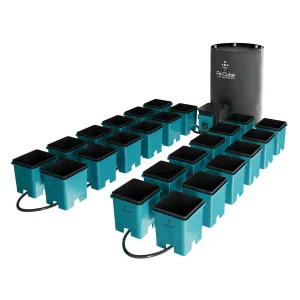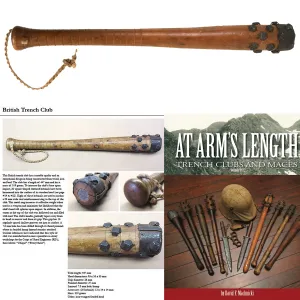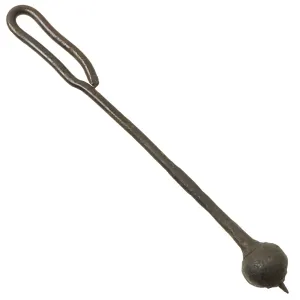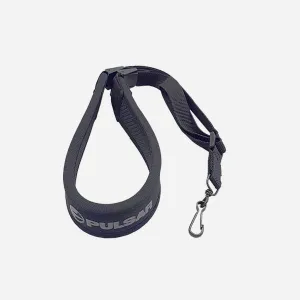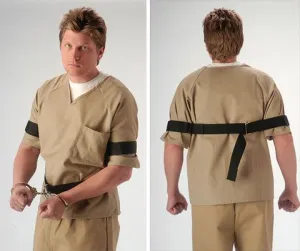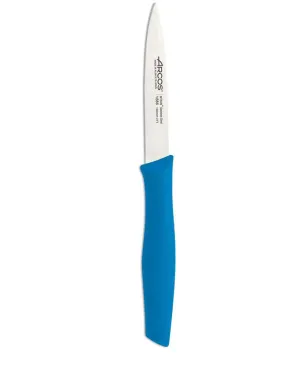This is a fine example of a World War One Hungarian officer’s Fokosbalta (blade with knob). The design for its steel head is that of a crescent shaped axe blade with a square-pyramidal knob. The edges on the head are smooth and the surface for its metal has become pitted over time. A metal wedge and a convex metal cap were used to splay the smooth wooden haft, which firmly anchors the axe head to its haft. The cylindrical wooden haft retains its original smooth and varnished surface. Attached to the foot of the haft is a 3mm T-Gewehr cartridge casing.
A “balta” is an axe with a tomahawk-like head and a long wooden haft. There is another style of axe with a much longer haft called a “fokos”. In general, a fokos will have an additional projection (blade, spike, knob, hook or hammer) opposite the blade. Many are decorated with dates, symbols, events or ornamental designs. Remaining with Hungarian tradition, the fokos is awarded to young boys upon completion of their mandatory eight years of elementary school (altalanos iskola). The fokos was used as a military weapon up through the end of World War One. At times, the head design is used to identify the location of its use. This example most likely served as a symbol of rank and authority for a WW1 Hungarian officer fighting on the Eastern Front.
Total length: 1,022 mm
Head dimensions: 140 x 2.0 x 81 mm
Grip diameter: 19.5 mm
Pommel diameter: 14 mm mm
Mass: 475 grams
Other: 13 mm T-Gewehr casing
Trench raiding clubs were homemade melee weapons used by both the Allies and the Central Powers during World War I. Clubs were used during nighttime trench raiding expeditions as a quiet and effective way of killing or wounding enemy soldiers. The clubs were usually made out of wood. It was common practice to fix a metal object at the striking end (e.g. an empty Mills bomb) in order to maximize the injury inflicted. Another common design comprised a simple stave with the end drilled out and a lead weight inserted, with rows of large hobnails hammered in around its circumference. Most designs had some form of cord or leather strap at the end to wrap around the user's wrist. Bosnian soldiers serving in the Austro-Hungarian army were fond of using maces. They were also used by officers to finish enemy soldiers wounded by poison gas attacks.
Trench clubs were manufactured in bulk by units based behind the lines. Typically, regimental carpenters and metal workers would make large numbers of the same design of club. They were generally used along with other "quiet" weapons such as trench knives, entrenching tools, bayonets, hatchets and pickaxe handles – backed up with revolvers and hand grenades.




